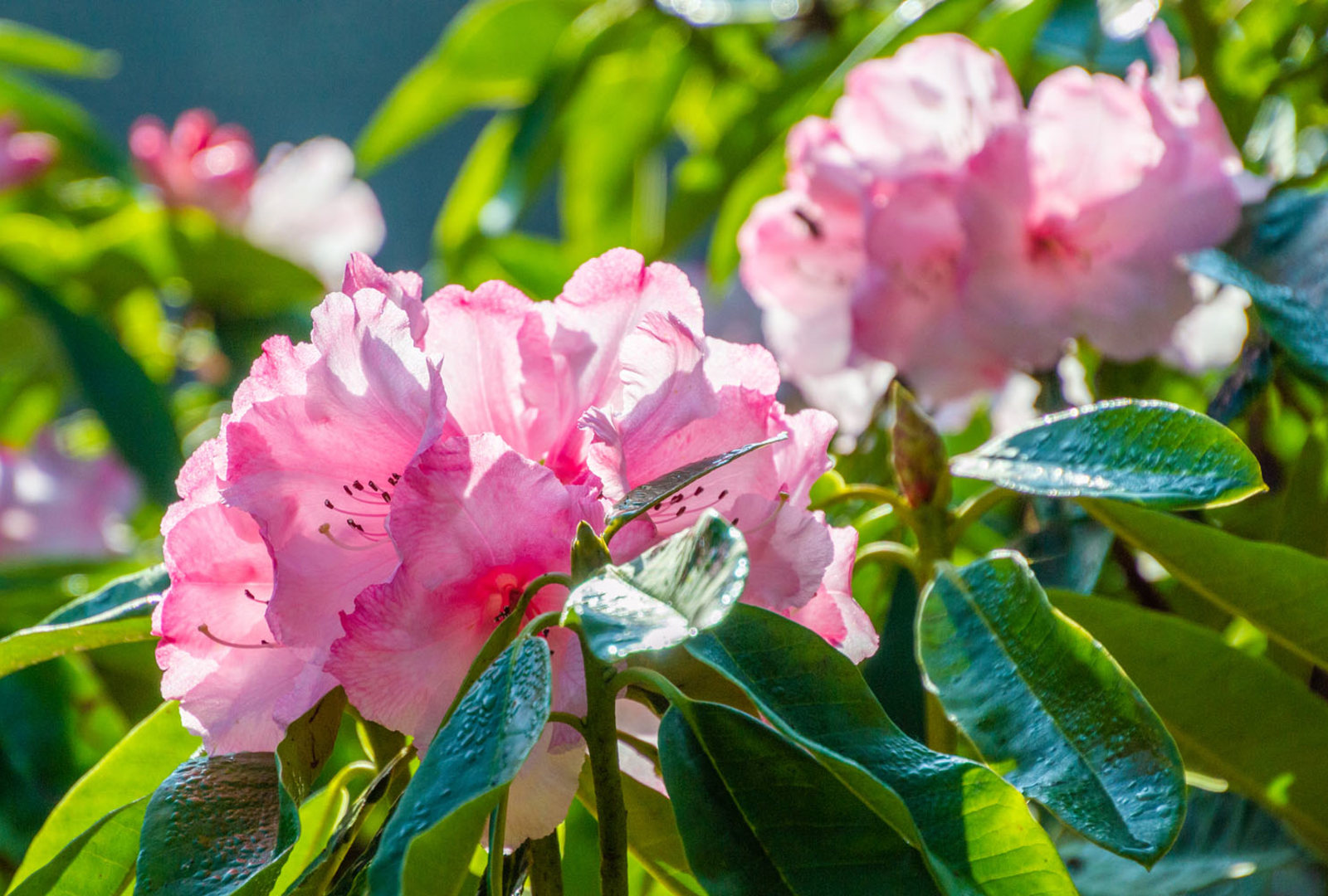Champion Trees
The plant recorders at Trebah Garden submitted the measurements of several trees to the National Tree Register.
They have confirmed that the following trees at Trebah are the tallest recorded living specimens in the United Kingdom.
The Tree Register of the British Isles was founded by Alan Mitchell (1922-1995) who during his lifetime almost single-handedly measured every notable tree. The Register database now has entries of over 190,000 trees and is regularly updated.
Rhododendron 'Glory of Penjerrick'
Grid reference: G7
- Height 10.00m
- Girth 1.21m
The Head Gardener at Penjerrick bred this tree like variety of Rhododendron in 1903. The deep strawberry red flowers fade to pink and appear from March to April.
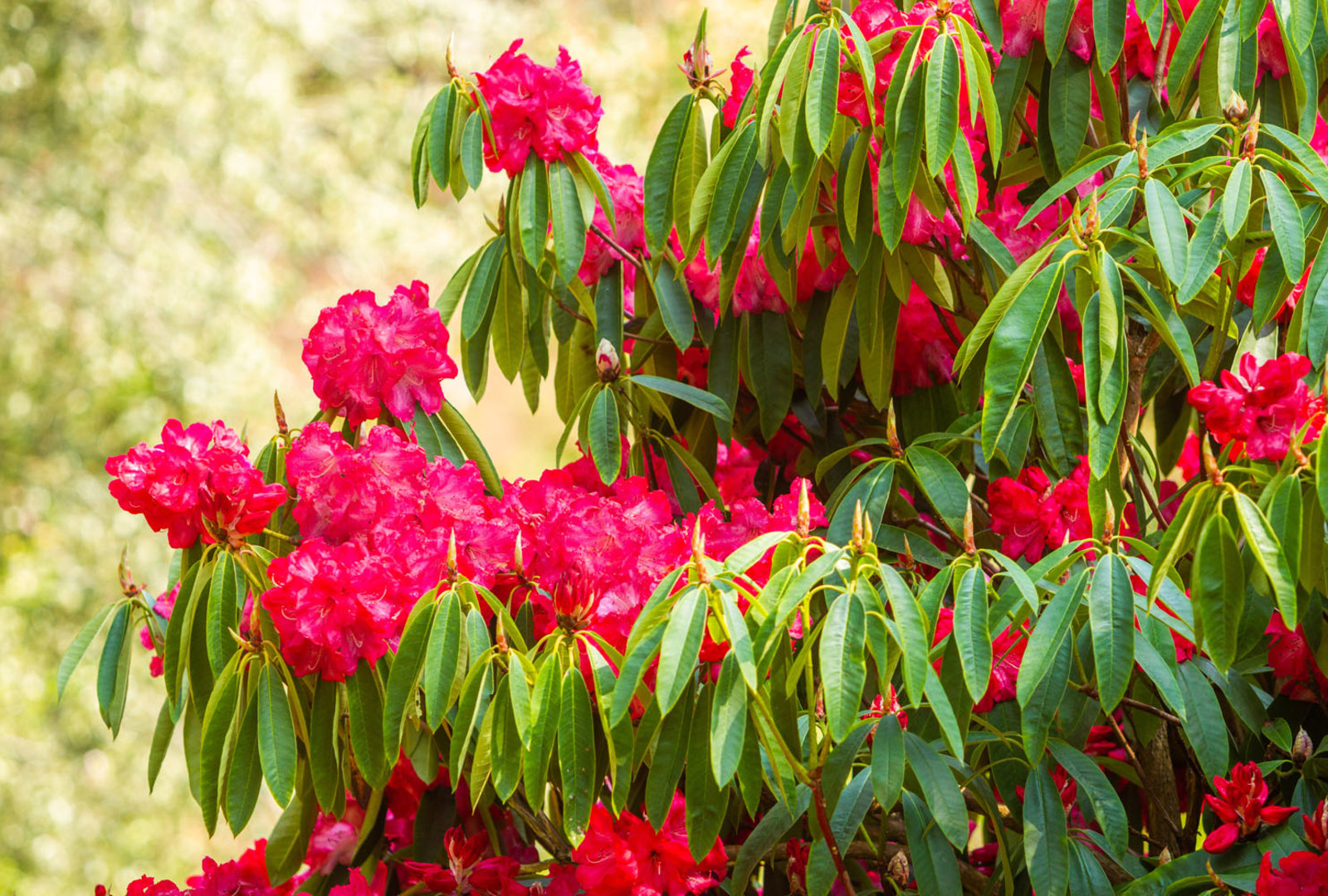
Podocarpus macrophyllus var. maki
Grid reference: H16
- Height 11.00m
- Girth 1.60m
This slow growing tree was introduced in 1861 and is rare and confined to collections and a few gardens in the South and South West of England. It is known as the Japanese Yew or the Buddhist Yew and is native to Japan and Southern China. This exotic Asiatic conifer has needle-like leaves in spirals on upright branches. It is an ideal plant for bonsai cultivation.
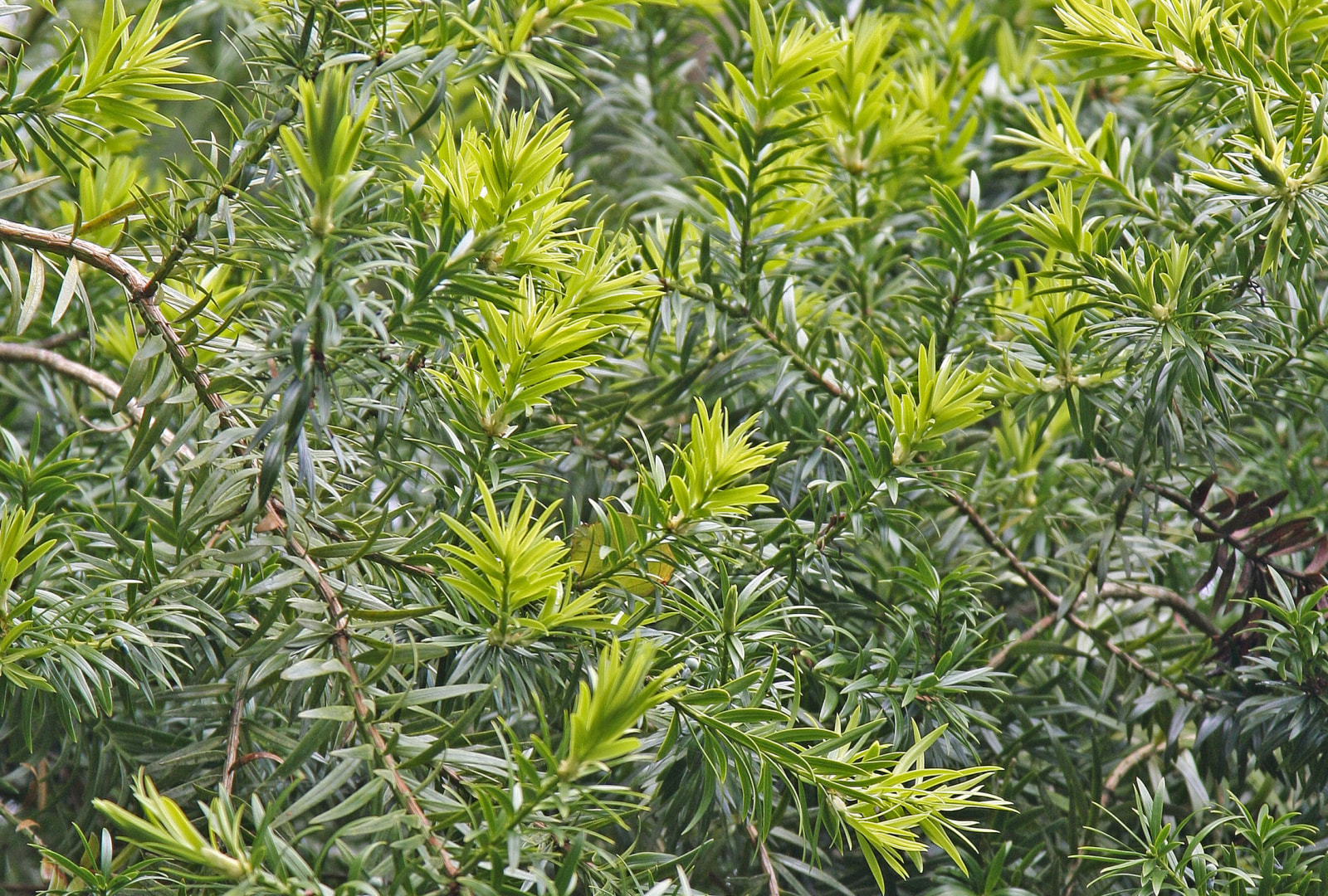
Laureliopsis philippiana
Grid reference: J15
- Height 21.00m
This rare evergreen tree is commonly known as Chilean Tepa. It comes from central Chile and Argentina hence it is only suitable for milder climates in Europe. The specimen at Trebah is over a hundred years old and we believe it to have been planted by Edmund and Juliet Backhouse.
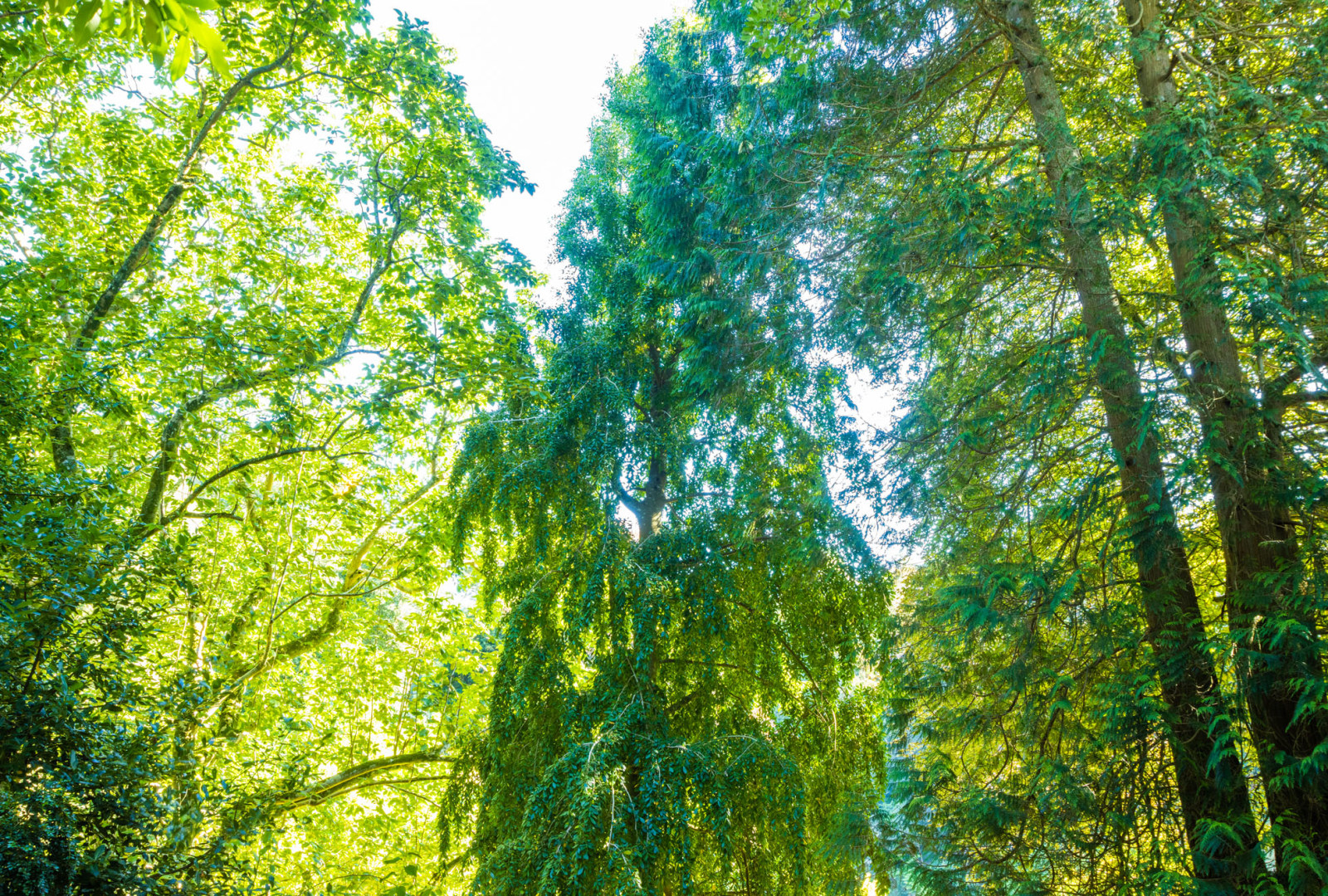
Acer palmatum (Japanese Maple)
Grid reference: I9
-
Height 19.30m
-
Girth 1.92m
By the time this tree was introduced to Europe in 1820 by Carl Thunberg, Japanese growers had already developed more than 250 cultivars. In Japanese gardens, the red form of this tree is often placed close to the water feature. It can be grown in most climates (except v. hot or v. cold). The Japanese Maple at Trebah was originally recorded by Thurston as being 30 feet (9m) in 1930.
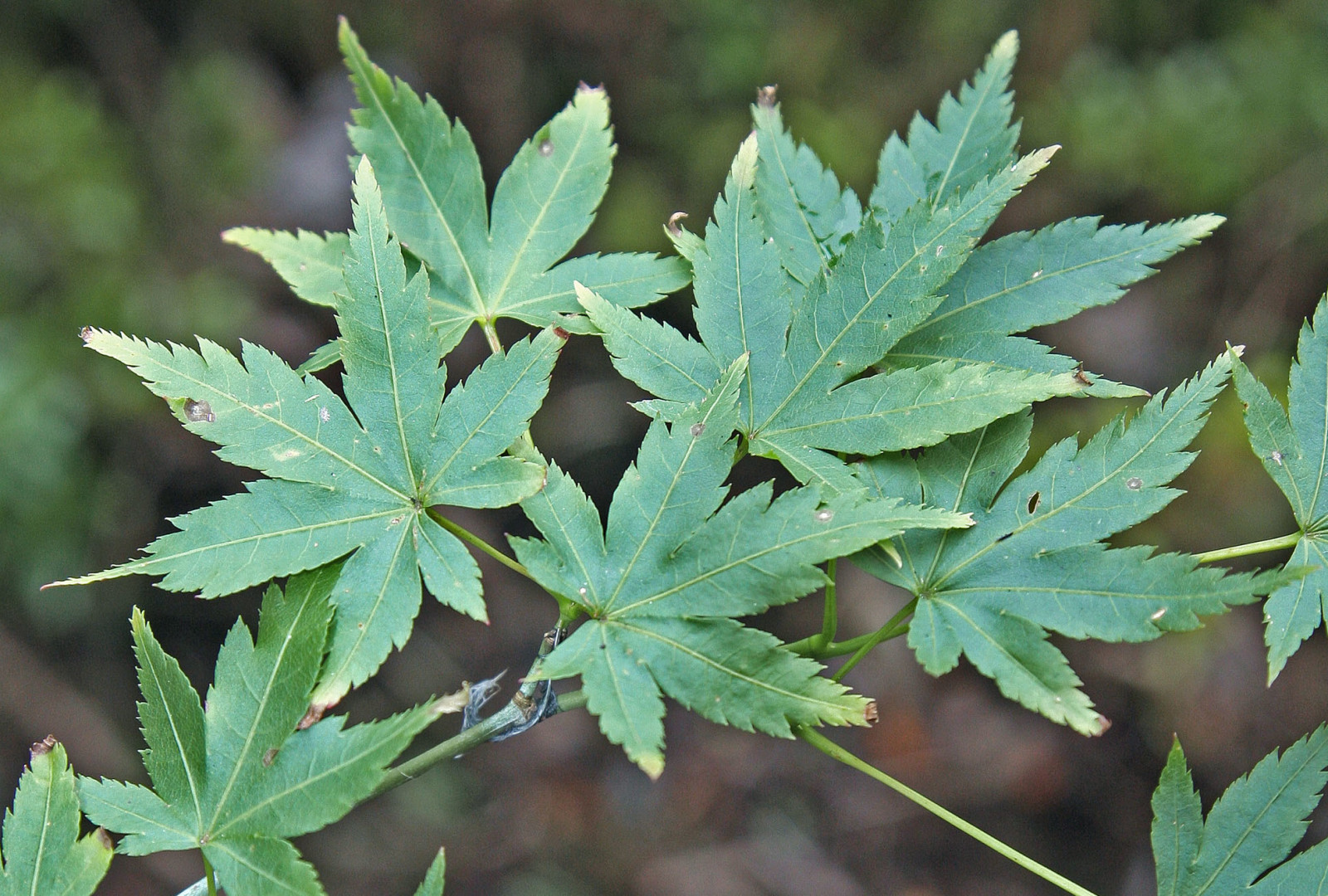
Trachycarpus fortunei
Grid reference: H8
- Height 14.70 metres
The Chusan Palm at Trebah stands at 14.75m. It is approximately 150 years old and may even be from the earliest distribution of this palm in the British Isles. The hardiest of all palm trees, it is anything but tropical as it comes from central China where it grows on cool, damp, misty hillsides. It is named after Robert Fortune who sent plants to the UK in 1849.
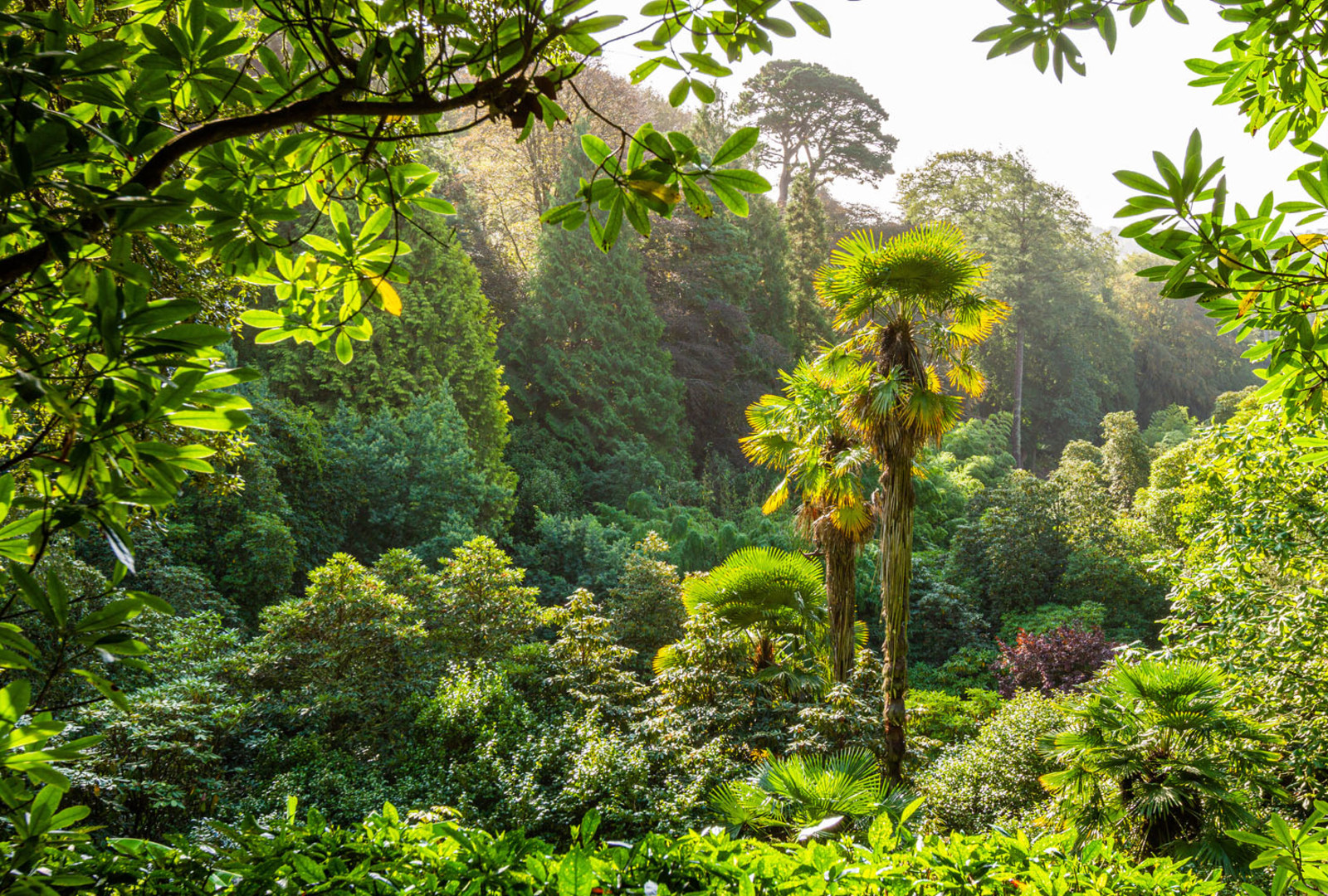
Thujopsis dolabrata
Grid reference: F10
- Height 25.50m
Thujopsis dolabrata is an evergreen conifer with flat, scented leaves.
In its native Japan it is often planted close to temples, as it is one of their five sacred trees. Each branchlet is make up of scale-like leaves that resemble tiny axe-heads and ‘dolabrata’ translated means hatchet.
The ‘Hiba’, as it is commonly known, is suited to warm wet areas such as Cornwall.
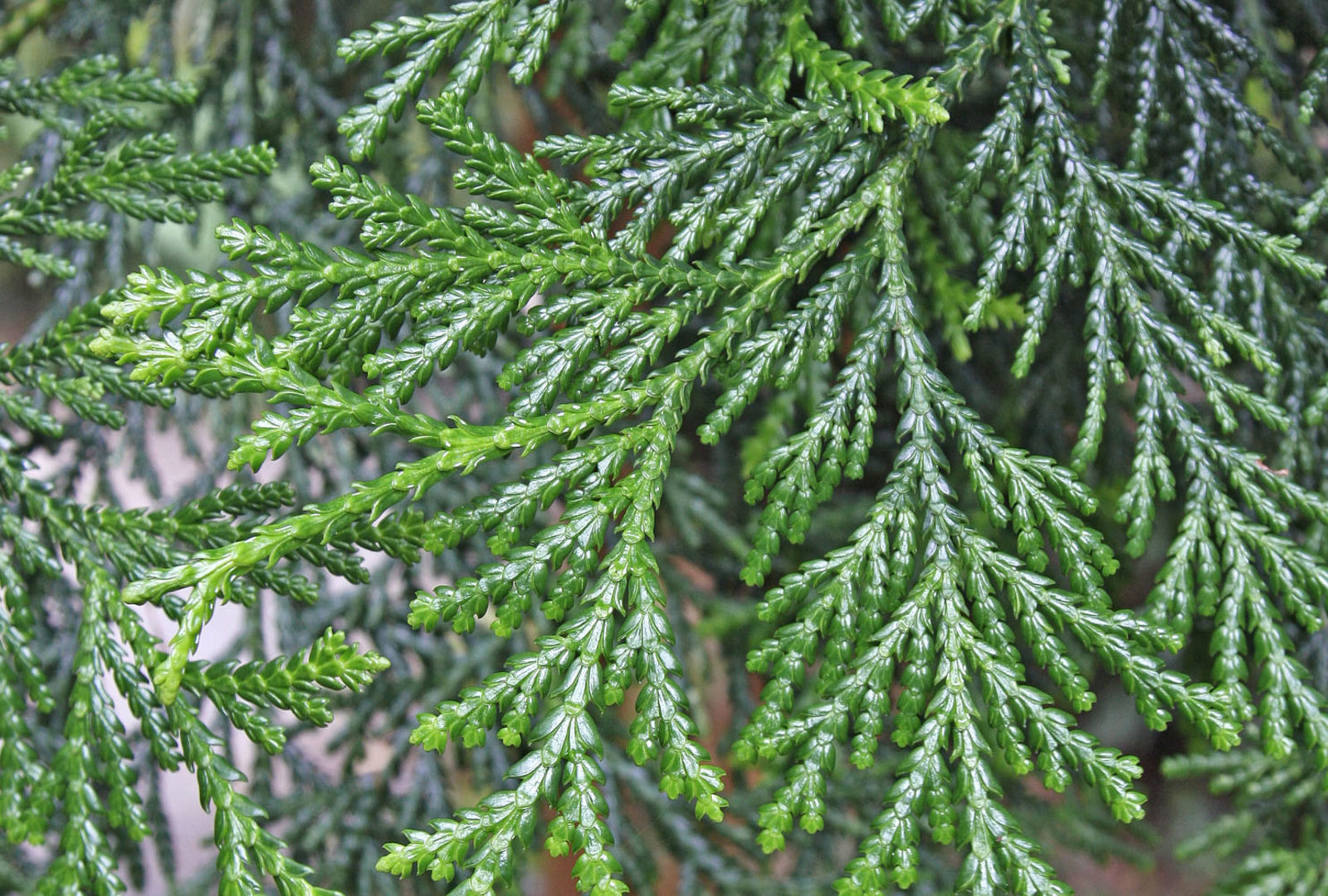
Dicksonia antarctica
Grid reference: H4
- Height TBC
Dates back to Jurassic and Cretaceous periods. The name antarctica relates to its relative southern location but it does not grow in Antarctica.
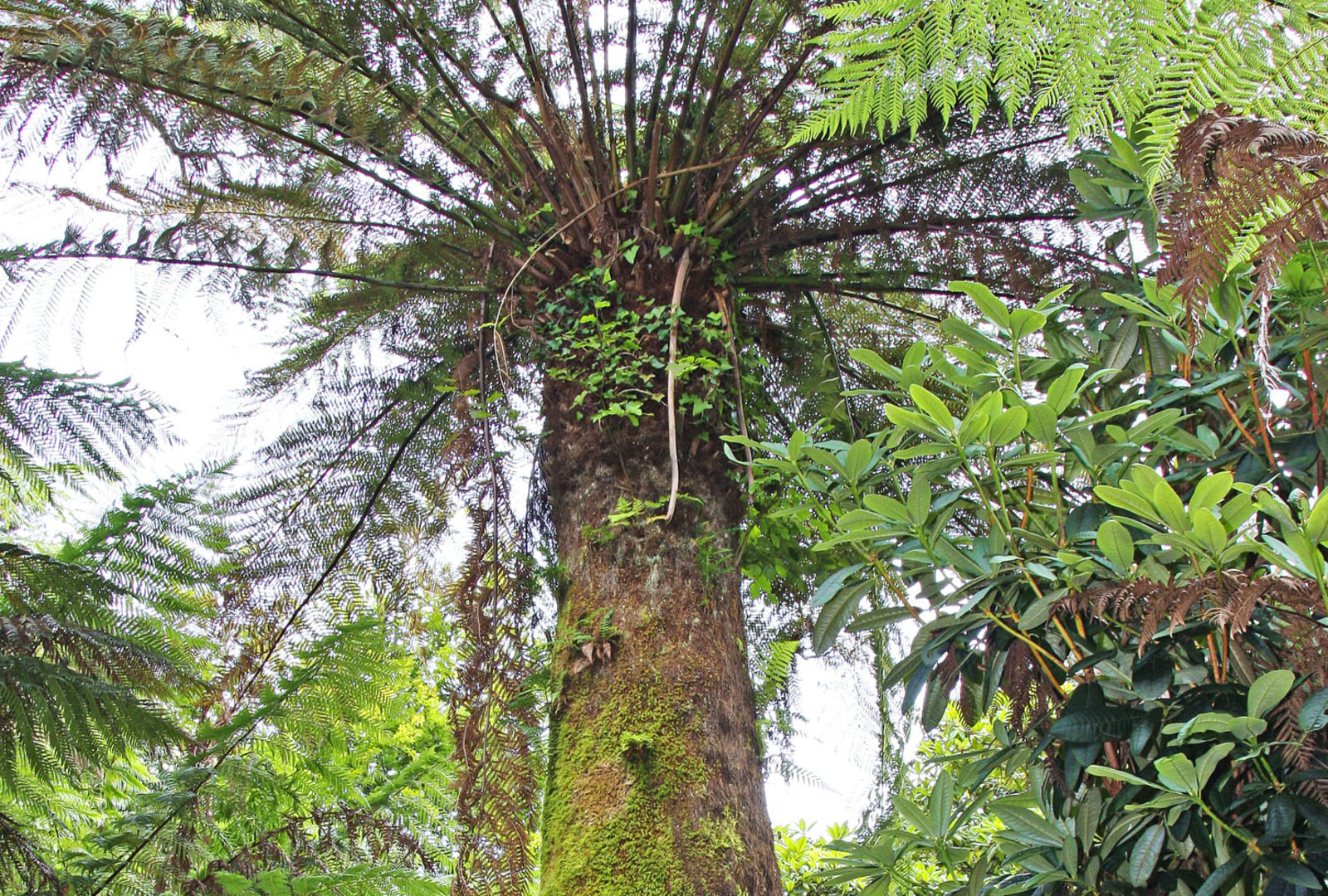
Rhododendron ‘Trebah Gem’
Grid reference: F9
- Girth TBC
Rhododendron ‘Trebah Gem’ is said to have been planted in 1899 and was raised from seed by Richard Gill of Tremough in 1893. It is the result of a cross between R. arboreum subs. arboreum and R. grifithianum.
